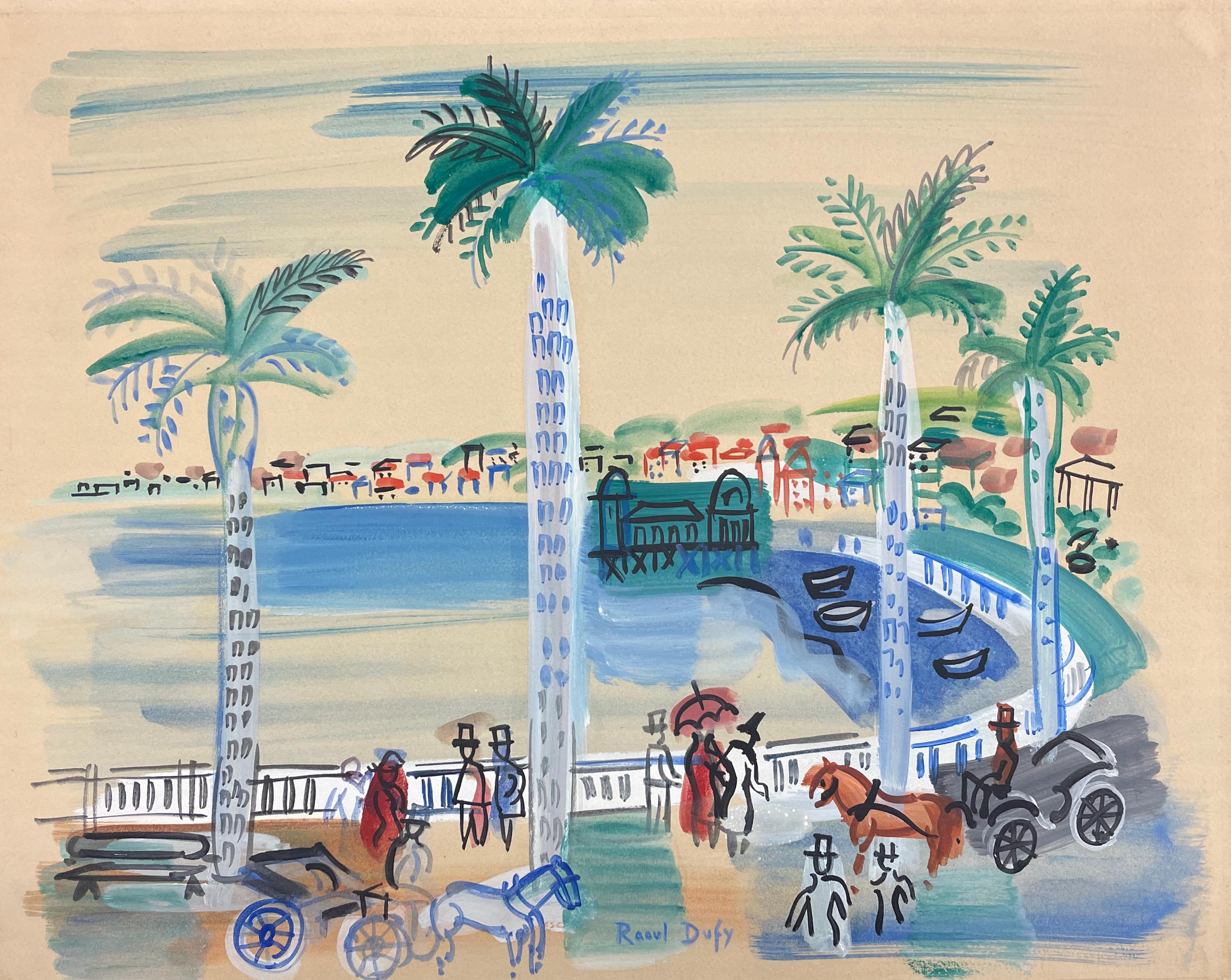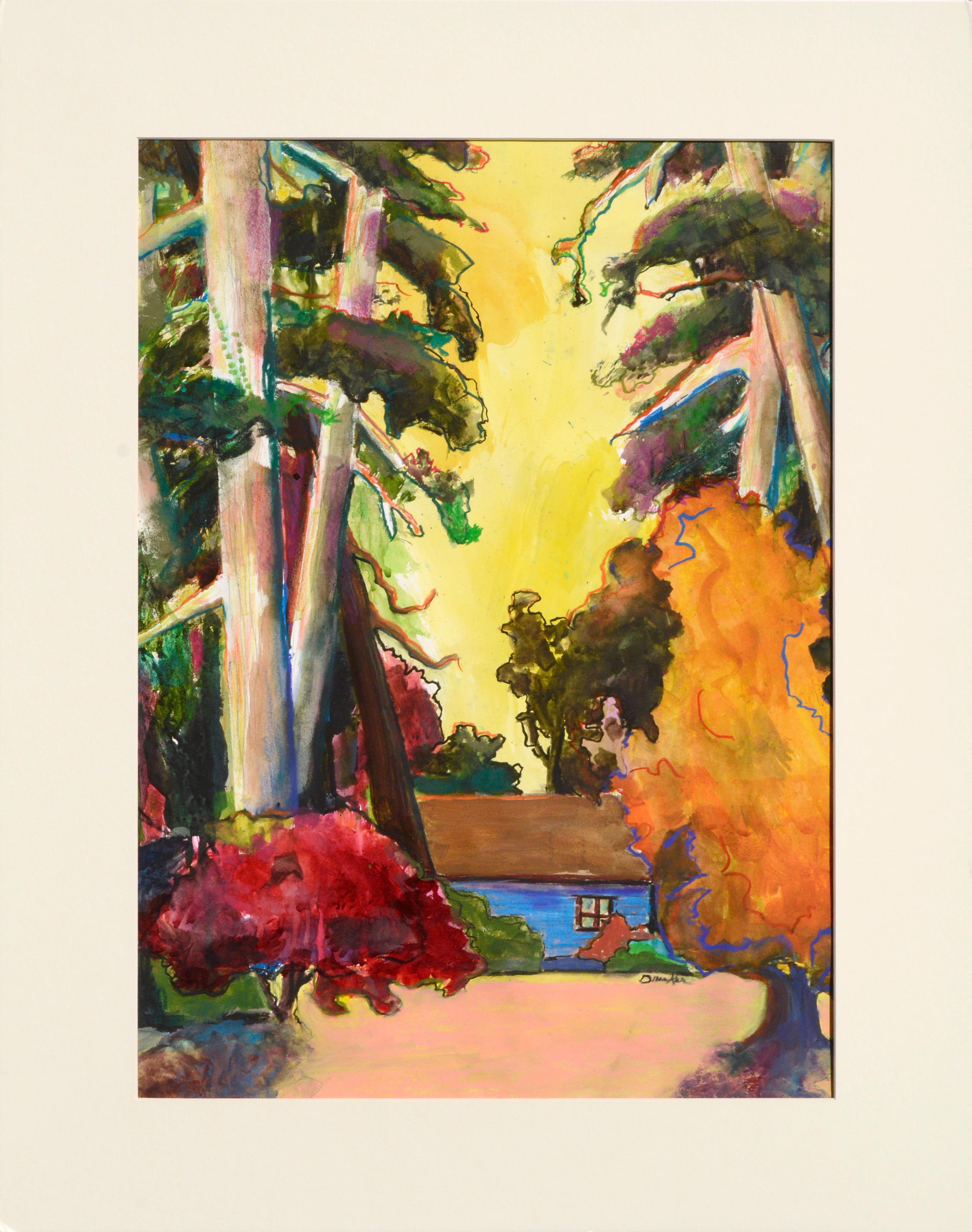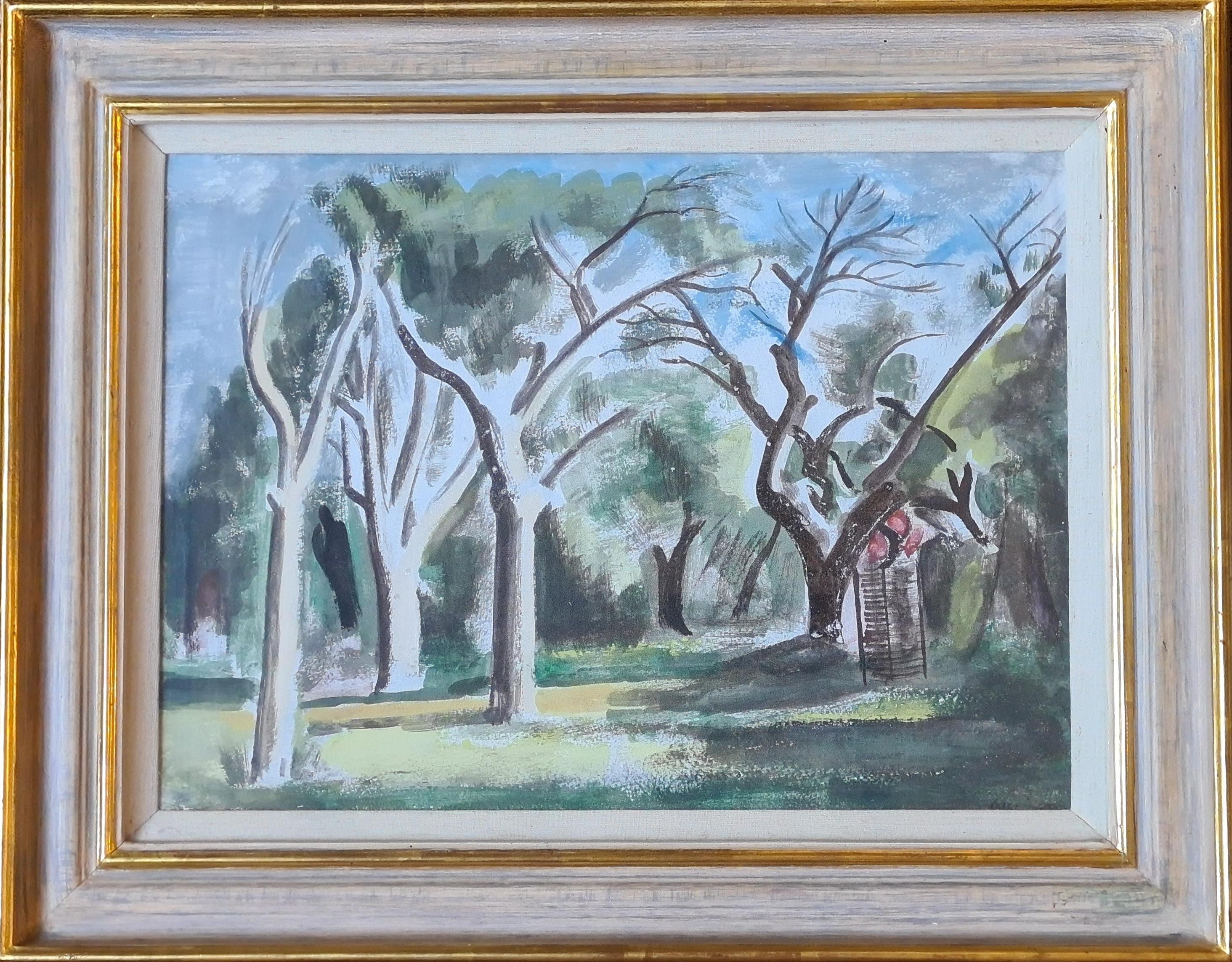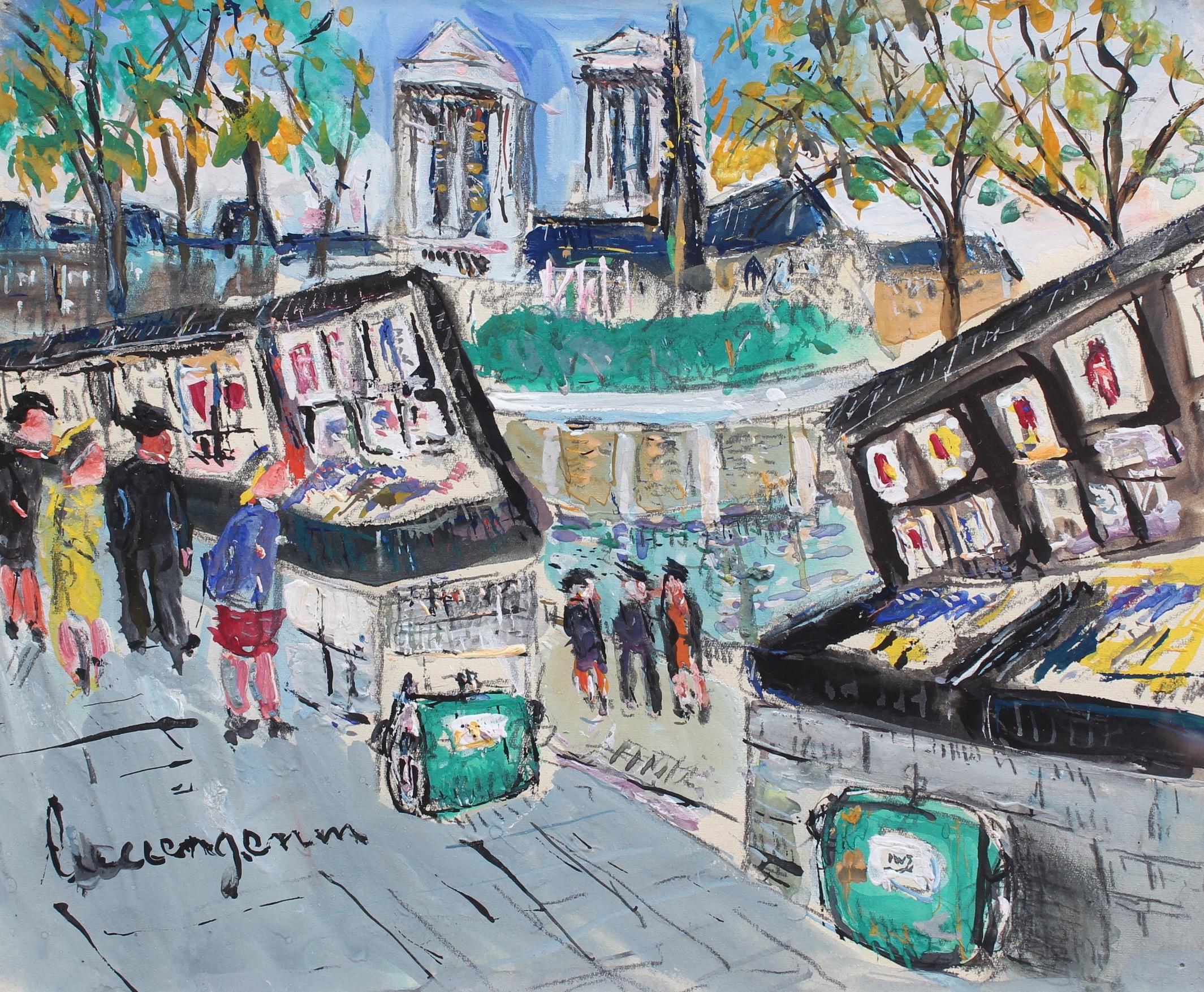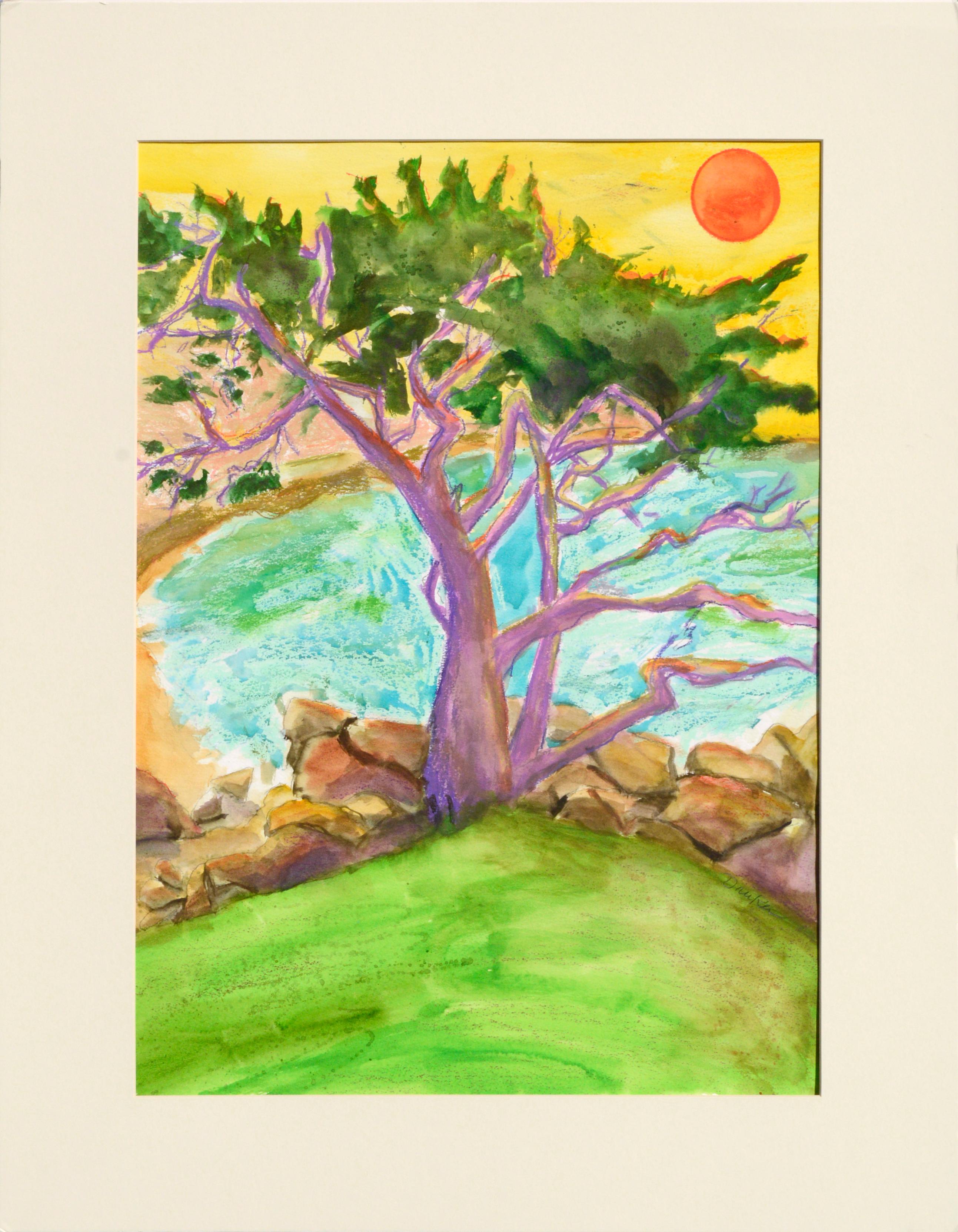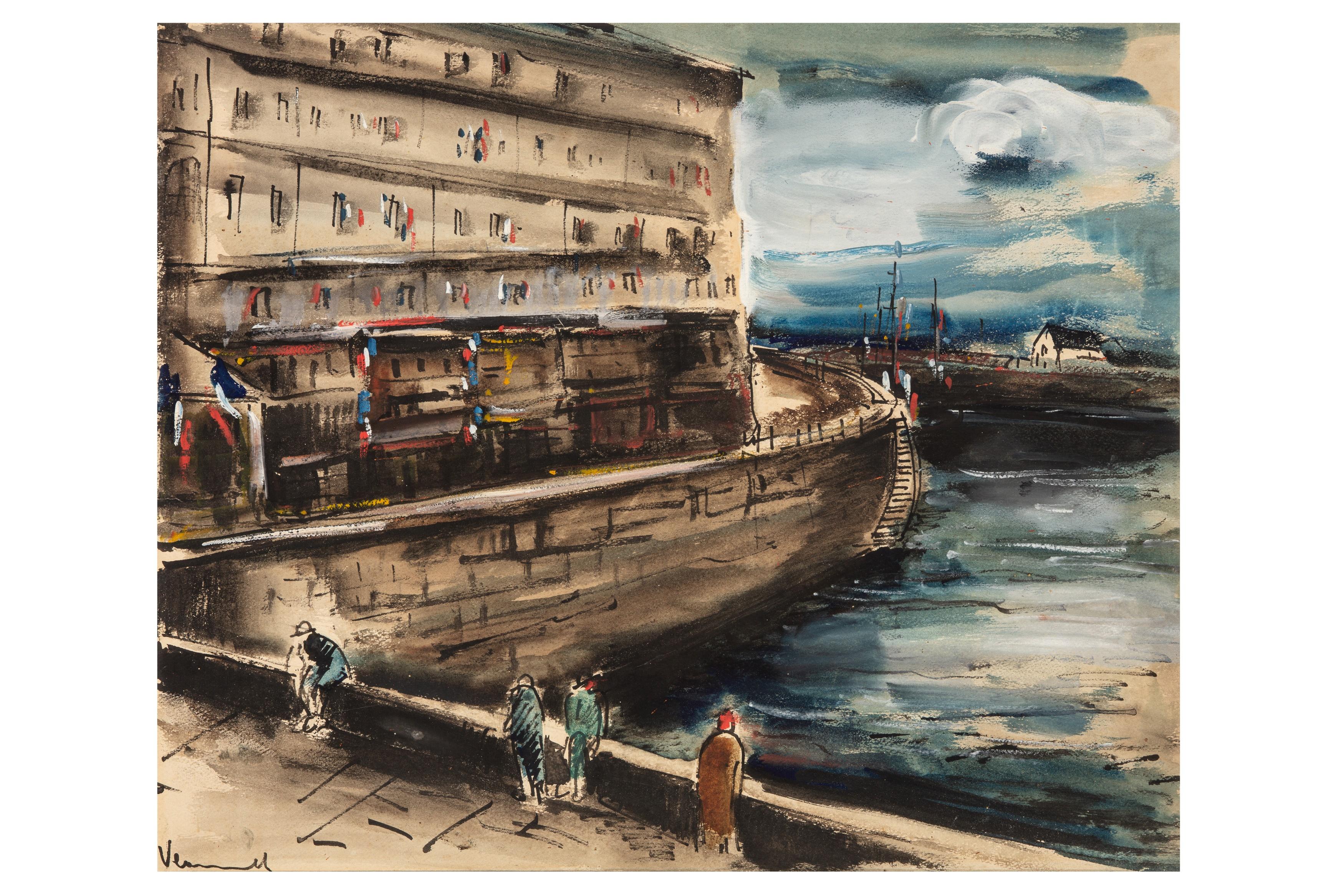Louis Wolchonok"Gondolas at the Dock, Venice, Italy" Louis Wolchonok, Boats in the Harbor Scene1928
1928
About the Item
- Creator:Louis Wolchonok (1898 - 1973, American)
- Creation Year:1928
- Dimensions:Height: 24.5 in (62.23 cm)Width: 30.5 in (77.47 cm)
- Medium:
- Movement & Style:
- Period:
- Condition:
- Gallery Location:New York, NY
- Reference Number:1stDibs: LU184129905412
Louis Wolchonok
Louis Wolchonok was an author of art books, etcher, painter of townscapes, landscapes, figures, muralist and graphic artist. Wolchonok was a social realist artist who worked in watercolors, oils and prints. He studied at the National Academy of Design, The Cooper Union, the City College of New York, Académie Julian in Paris, and the Brooklyn Academy of Fine Arts. He taught drafting at the City College of New York from 1930; and design, painting and etching at the Craft Students League, YWCA, New York, from 1932. He authored The Art of Three Dimensional Design: How to Create Space Figures, Lessons in Pictorial Composition and Design for Artist and Craftsmen.
- ShippingRetrieving quote...Ships From: Larchmont, NY
- Return PolicyA return for this item may be initiated within 3 days of delivery.
- "New York Yankees World Series Celebration, " Kamil Kubik Baseball Street ParadeBy Kamil KubikLocated in New York, NYKamil Kubik (1930 - 2011) The New York Yankees 1998 Baseball World Series Celebration, 1998 Pastel on paper Sight 26 x 19 1/2 inches Provenance: The artist's estate The 1998 New York Yankees were one of the best baseball teams ever, comprising players such as Jorge Posada, Tino Martinez, Chuck Knoblauch, Scott Brosius, Derek Jeter...Category
1990s Post-Impressionist Landscape Paintings
MaterialsOil Pastel, Paper
- "Park Street Church, Boston, " John Whorf Impressionist Watercolor WPA CityscapeBy John WhorfLocated in New York, NYJohn Whorf (1903 - 1959) Park Street Church, Boston, circa 1930-45 Watercolor on paper 21 x 15 inches Signed lower right Housed in its original frame Provenance: Milch Gallery, New ...Category
1930s American Impressionist Landscape Drawings and Watercolors
MaterialsWatercolor, Paper
- "Andes Mountains Peru South America, " Joseph Yoakum, Black Folk Art LandscapeBy Joseph YoakumLocated in New York, NYJoseph Yoakum Andes Mountains Peru So America, circa 1960s Colored pencil and ballpoint pen on paper 7 1/4 x 10 1/2 inches Provenance: Karen Lennox Gallery, Chicago Private Collection, South Dakota Yoakum began drawing in the early 1960s. Most of his work consists of radiantly colored landscapes with mountains, water, trees, and winding roads in abstract and complex configurations. his period of greatest activity — 1965 to 1970 — when he usually made one drawing a day. Yoakum maintained he had seen all the places represented in his drawings, a statement that may not be true in some instances. He traveled a great deal, beginning in his early teens when he ran away from home and became a circus handyman. Yoakum’s drawings can be considered memory images growing out of either actual or imagined experiences. All of his drawings have titles that grew longer and more specific over the years. He dated his works with a rubber stamp — an oddly impersonal, labor-saving device. Although Joseph Yoakum gave vastly different accounts of his background, he was, throughout his life, classified as an African American. Sometimes Yoakum claimed that he was a full-blooded “Nava-joe” Indian, one of twelve or thirteen children born to a farmer on an Indian reservation in Window Rock, Arizona. At other times he insisted that he was of African-American descent. He described his mother as a strong woman who was a doctor and knowledgeable in the use of herbal medicines. Yoakum’s family moved to Kansas City, Missouri, during his early childhood. His father was employed briefly in the railroad yards prior to settling permanently on a farm in nearby Walnut Grove...Category
1960s Folk Art Landscape Paintings
MaterialsPaper, Watercolor, Ballpoint Pen, Color Pencil
- "Gray Morning" James MacMaster, Scottish Seascape, Marine Ship LandscapeBy James MacMasterLocated in New York, NYJames MacMaster Gray Morning Signed and titled lower left Watercolor on paper 10 1/4 x 14 inches Provenance: Private Collection, New JerseyCategory
Late 19th Century Landscape Paintings
MaterialsPaper, Watercolor
- "Irvine Harbour" James MacMaster, Scottish Seascape, Marine Ship PaintingBy James MacMasterLocated in New York, NYJames MacMaster Irvine Harbour Signed lower right Watercolor on paper 10 1/4 x 14 inches Provenance: Private Collection, New JerseyCategory
Late 19th Century Landscape Paintings
MaterialsPaper, Watercolor
- "Sheepshead, Brooklyn, Long Island" Oscar Bluemner, Modernist WatercolorBy Oscar BluemnerLocated in New York, NYOscar Bluemner Sheepshead, Long Island, 1907 Signed with the artist's conjoined initials "OB" and dated "4-30 - 5 - 30" / "Aug 3, 07" Watercolor on paper 6 x 10 inches Provenance: J...Category
Early 1900s American Modern Landscape Drawings and Watercolors
MaterialsPaper, Watercolor
- La Baie des Anges a Nice et le Casino 1928 gouache Palm Trees, Horse & CarriageBy Raoul DufyLocated in Rancho Santa Fe, CALa Baie des Anges a Nice et le Casino is a lovely gouache on paper from 1928. The work is fully authenticated by Fanny Guillon-Laffaille and is listed in the Raoul Dufy Catalogue Rai...Category
1920s Post-Impressionist Landscape Paintings
MaterialsGouache, Archival Paper
- The Blue Cabin - Vertical LandscapeBy Karen DrukerLocated in Soquel, CABrightly colored landscape of a cabin in the woods by Karen Druker (American, 1945). Signed "Druker" in the lower right corner. Presented in a cream mat. No frame. Image size: 30"H x...Category
21st Century and Contemporary Fauvist Landscape Drawings and Watercolors
MaterialsPaper, Pastel, Watercolor
- Cookham Dean, A Post Impressionist Landscape, Homage to CezanneBy Bernard MeninskyLocated in Cotignac, FRAn English Post Impressionist gouache of trees in a landscape by noted artist Bernard Meninsky. The painting is signed bottom right and presented in a very fine custom patinated and gilt frame with cloth insert, under glass. There is an exhibition label to the back of the frame, giving the painting's location 'Cookham Dean' in Berkshire near the home of noted contemporary of Meninsky, Stanley Spencer. Provenance: The Boydell Galleries, Liverpool. A charming work when Meninsky was clearly showing the influence and his love for the paintings of Cezanne. The simplification of forms, as well as the flattening of landscape and the use of colour to give perspective. An earlier work by Meninsky but important in his artistic journey to his evolving style. Bernard Meninsky (25 July 1891–12 February 1950) was a British painter of figures and landscapes in oils, watercolour and gouache, a draughtsman and a teacher. Meninsky was born in Konotop, modern-day Ukraine, where his father was a tailor and the family were Yiddish-speaking Ukrainian Jews. They moved to Liverpool when Bernard was six weeks old. Although Meninsky left school at the age of eleven, his talent for art was demonstrated by the sale of a drawing to a local comic postcard business. While working as an errand boy during the day, he attended free classes in art in the evenings, and these enabled him to gain a place at the Liverpool School of Art. He studied there from 1906 to 1911, being financed by a succession of scholarships. He attended summer courses at the Royal College of Art, London, in August 1909 and August 1910, and in 1911 he won a scholarship to study at the Académie Julian in Paris for three months. With financial support from the Liverpool Jewish community and the Jewish Educational Aid Society (JEAS), Meninsky studied at the Slade School of Fine Art in London in 1912. His contemporaries there included David Bomberg, Isaac Rosenberg...Category
Early 20th Century Post-Impressionist Landscape Paintings
MaterialsWatercolor, Gouache, Paper
- Paris Booksellers (Bouquinistes) Along the River SeineBy Lucien GéninLocated in London, GB'Paris Booksellers Along the River Seine', gouache on paper (circa 1930s), by Lucien Génin. The used-book sellers (bouquinistes) you see along the Seine a...Category
Early 20th Century Post-Impressionist Landscape Paintings
MaterialsPaper, Gouache
- Purple Cypress Tree - Coastal Fauvist Vertical LandscapeBy Karen DrukerLocated in Soquel, CABrightly colored Fauvist coastal landscape of a vivid purple cypress tree at the edge of the water, under a bright yellow sky and orange sun by Karen Druker (American, 1945). Signed ...Category
21st Century and Contemporary Fauvist Landscape Drawings and Watercolors
MaterialsPaper, Pastel, Watercolor, Pencil
- UnknownBy Maurice de VlaminckLocated in Norwich, GBMaurice de Vlaminck was a French painter, best known as one of the spearheads of the Fauvism movement at the start of the 20th century. His reputation rests predominantly on his land...Category
Early 20th Century Fauvist Landscape Drawings and Watercolors
MaterialsWatercolor
